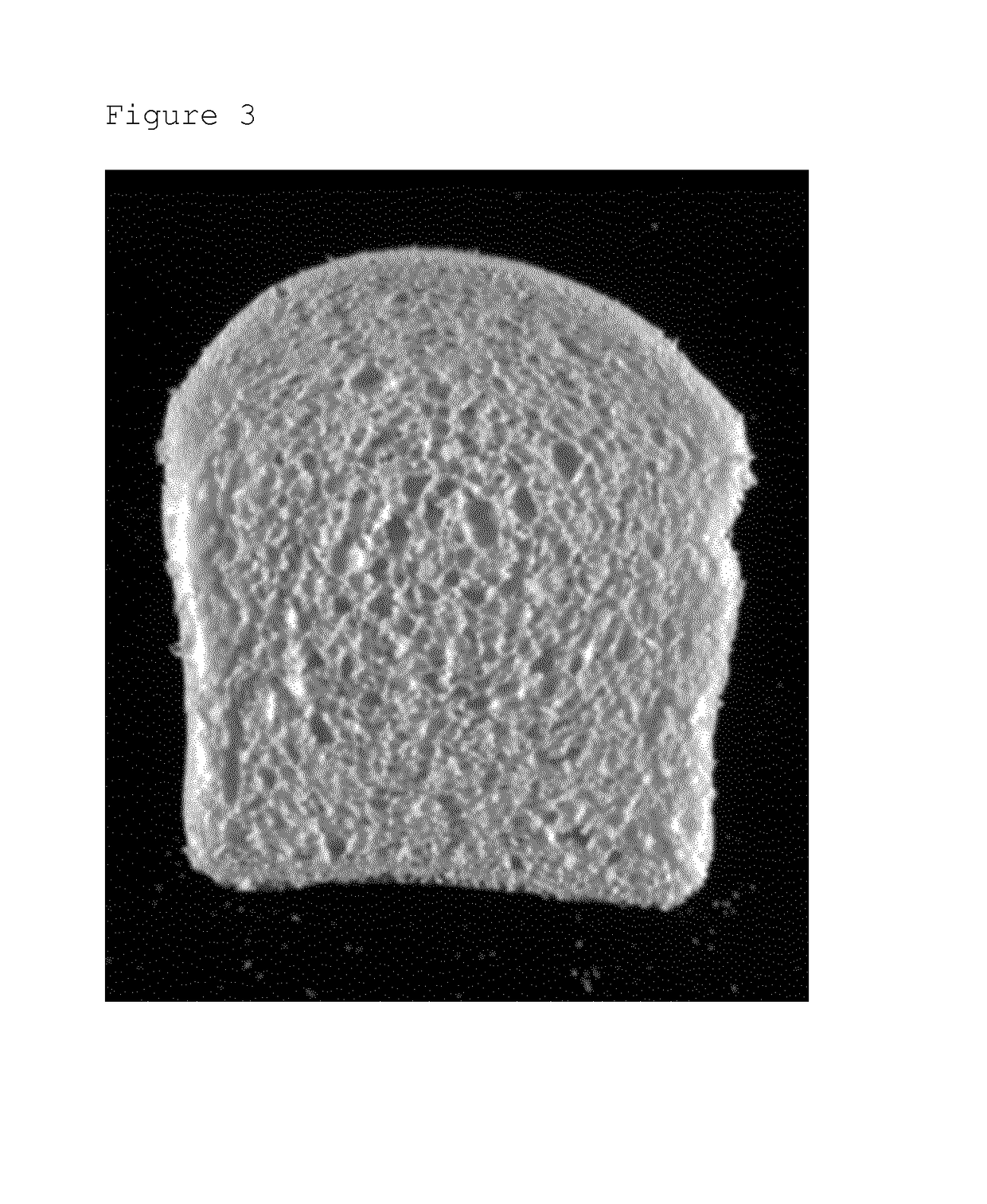Gluten-free or gluten-reduced bread dough
- Summary
- Abstract
- Description
- Claims
- Application Information
AI Technical Summary
Benefits of technology
Problems solved by technology
Method used
Image
Examples
example 1
on of Dough Compositions
[0052]Different gluten-free bread dough compositions were formulated with the ingredients according to Table 1 and 2.
[0053]The compositions were made with the following ingredients:[0054]A mixture of 3 starches (corn starch, potato starch, tapioca starch). These are isolated (chemically pure), native starches; they are not chemically or physically modified:[0055]Corn starch: Cargill Gel 03420, native common corn starch, moisture ≤12%; Cargill, Inc., Hammond, Ind.)[0056]Potato starch: PenPure 10, native potato starch, moisture ≤20% (Penford, Centennial, Colo.)[0057]Tapioca starch: PenPure 50, native tapioca starch, moisture ≤15% (Penford, Centennial, Colo.)[0058]A gluten-free flour component: two different flours were used:[0059]Gluten-free 5 grain whole grain flour blend (100% whole grain) from amaranth, quinoa, millet, sorghum, teff (provided by ConAgra Food Ingredients, Omaha, Nebr.)[0060]Brown rice flour (in the given test series, whole grain brown rice fl...
example 2
of Making Baked Bread Products
[0069]The following procedure of making the bread products was followed for samples 1-7:[0070]The ingredients according to Table 1 were mixed together in a Kenwood mixer (1000-2000 g batch, paddle tool, lowest level, 60 sec; followed by scraping of the bowl and another 60 sec on medium level) to make a dough batter;[0071]The dough's were divided into portions: a 550 g portion was put into a 12 inch (30.5 cm) pan and flattened by hand; a 250 g portion was put into a pup loaf pan (5½×3×2 inches; 14×7.6×5.1 cm);[0072]The dough's were proofed at room temperature to height: 30-60 min until pup loaf reached upper edge, which was typically after ca. 40 min;[0073]The dough's were then baked at 425° F. (218° C.) for 25 min in a standard household oven.
[0074]The following procedure of making the bread products was followed for samples 8-15:[0075]The ingredients according to Table 2 were mixed (2000-6000 g batch, paddle tool, lowest level, 60 sec; followed by scra...
example 3
n of the Baked Bread Products
[0079]The results of the evaluation of the baked bread products are shown below in Tables 3 and 4.
[0080]The resulting crumb properties were evaluated as to differentiating visual effects and mechanical effects (crumb texture, as also perceived in the mouth or by touching by hand). A same product may have for example a quite good appearance (e.g. fine regular pores), but a bad texture, e.g. a gummy mouth-feel. Or vice versa, the appearance may be bad, e.g. the crumb torn, but the texture may be not objectionable from an organoleptic view point.
[0081]The evaluation of the baked products was rated on a scale from 1 to 10 (i.e. from worst to best). On the scale provided, a 1 (worst) was given to a sample when the baked product had a clear disqualifying flaw making the formulation not industrially feasible: for example visually, when the crumb of a pizza crust was torn open like a pita bread; or when the texture was extremely gummy so that the crumb stuck to ...
PUM
 Login to View More
Login to View More Abstract
Description
Claims
Application Information
 Login to View More
Login to View More - R&D
- Intellectual Property
- Life Sciences
- Materials
- Tech Scout
- Unparalleled Data Quality
- Higher Quality Content
- 60% Fewer Hallucinations
Browse by: Latest US Patents, China's latest patents, Technical Efficacy Thesaurus, Application Domain, Technology Topic, Popular Technical Reports.
© 2025 PatSnap. All rights reserved.Legal|Privacy policy|Modern Slavery Act Transparency Statement|Sitemap|About US| Contact US: help@patsnap.com



